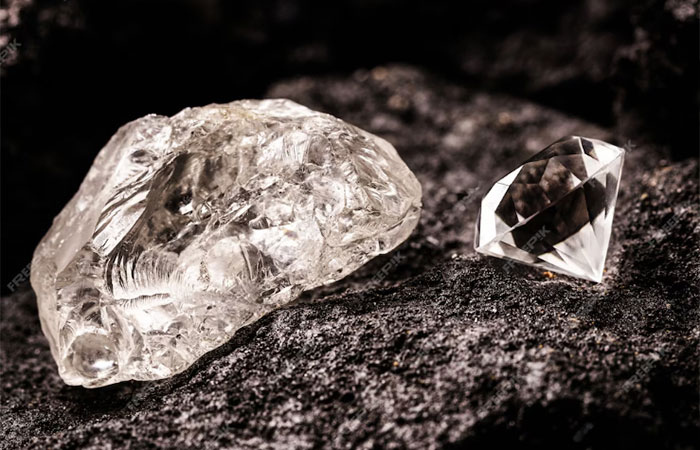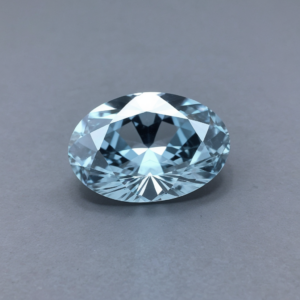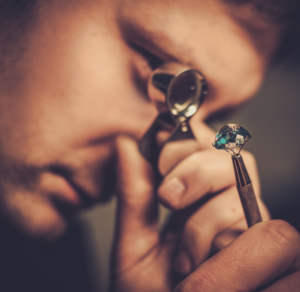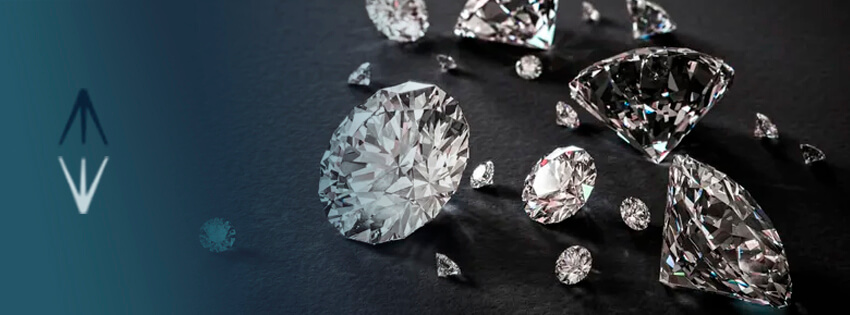Distinguishing between a diamond and a cubic zirconia is essential for anyone interested in acquiring high-quality jewelry. While they may appear similar at first glance, their physical characteristics, value, and durability differ significantly. In this post, we will explore the key differences and methods to identify each of these gems.
What is a Diamond?
Origin and Formation of Diamonds
Diamonds form over billions of years under extreme pressure and temperature conditions in the Earth’s mantle. They are composed of pure carbon and are primarily extracted from alluvial deposits and kimberlite rocks. For more information, you can read our detailed article on how diamonds form in nature.

Physical Characteristics of Diamonds
- Hardness: Diamonds are the hardest known material, with a hardness of 10 on the Mohs scale.
- Brilliance: They have exceptional brilliance due to their high refractive index.
- Light Dispersion: Diamonds disperse white light into all colors of the spectrum, giving them their famous “fire”.
Common Uses and Applications of Diamonds
- Jewelry: Mainly in rings, earrings, necklaces, and bracelets.
- Industry: Used in cutting and polishing tools due to their hardness.
What is a Cubic Zirconia?
Cubic zirconia is a synthetic gem created in laboratories by fusing zirconium oxides and other materials. It was developed as an affordable alternative to diamonds.

Physical Characteristics of Cubic Zirconia
- Hardness: Lower than that of diamonds, with a hardness of 8-8.5 on the Mohs scale.
- Brilliance: While it has high brilliance, it is less brilliant than a diamond.
- Light Dispersion: The light dispersion is noticeable but not as intense as in diamonds.
Common Uses and Applications of Cubic Zirconia
- Jewelry: Frequently used in a variety of jewelry due to its diamond-like appearance and low cost.
Key Differences Between Diamonds and Cubic Zirconia
Chemical Composition
- Diamonds: Composed of pure carbon, formed naturally in the Earth under extreme pressure and temperature conditions.
- Cubic Zirconia: Composed of zirconium oxides, created in laboratories by fusing these compounds.
Hardness and Durability
- Diamonds: With a hardness of 10 on the Mohs scale, they are the hardest known stones and extremely resistant to wear and scratches.
- Cubic Zirconia: With a hardness of 8-8.5 on the Mohs scale, they are more susceptible to scratches and less durable than diamonds.
Brilliance and Light Dispersion
- Diamonds: Have exceptional brilliance due to their high refractive index and disperse light into all colors of the spectrum, creating the famous “fire” of diamonds.
- Cubic Zirconia: Possess good brilliance and light dispersion, but their refractive index is lower than that of diamonds, resulting in less intense brilliance and fire.
Price and Value
- Diamonds: Highly valuable and expensive due to their rarity, durability, and demand. They maintain their value over time and are considered a long-term investment.
- Cubic Zirconia: Much more affordable and do not retain the same resale value as diamonds. They are an affordable alternative for those who want the look of a diamond without the high cost.
Methods to Differentiate Between a Diamond and a Cubic Zirconia
Breath Test
Breathe on the stone. A diamond disperses heat quickly and will not fog up, whereas a cubic zirconia will fog up for a few seconds.
Loupe Test
Use a jeweler’s loupe to look for inclusions and defects. Natural diamonds generally have inclusions, while cubic zirconia is often flawless. If you want to learn more about how to differentiate a natural diamond from an artificial one, visit this informative article.
Thermal Conductivity Test
Diamonds are excellent conductors of heat. A diamond tester can detect the difference based on this property.
Refraction Test
Observe the light refraction through the stone. Diamonds have a single and sharp refraction, while cubic zirconia has a double refraction that can make letters or lines appear double when viewed through the stone.
Professional Tools for Identification
- Using a Diamond Tester: These devices measure the thermal conductivity of the gem to determine if it is a real diamond.
- Gemological Microscopes and Loupes: Allow for the observation of inclusions, cuts, and other distinctive features.
- Gemological Certificates: Obtaining a certificate from a recognized entity like the GIA (Gemological Institute of America) ensures the authenticity and quality of the gem.

So What are the Main Differences Between Diamonds and Cubic Zirconia
We find 6 important differences between these two gemstones:
- Chemical Composition: Diamonds are composed of pure carbon, while cubic zirconia is zirconium oxides.
- Hardness and Durability: According to the Mohs scale, diamonds have a value of 10, being extremely resistant. Cubic zirconia has a hardness of 8-8.5, making it more susceptible to scratches.
- Brilliance and Light Dispersion: Diamond brilliance is more potent and intense due to its high refractive index, creating a characteristic “fire”. Cubic zirconia has less brilliance and disperses less light.
- Value and Price: Diamonds are much more expensive and maintain their value over time. Cubic zirconia is more affordable and does not have the same resale value.
- Inclusions and Purity: Natural diamonds often have inclusions due to their natural formation, while lab-created cubic zirconia is usually flawless and inclusion-free.
- Weight: If we compare both stones of the same size, cubic zirconia is heavier than diamond due to its lower density.
These differences are crucial for properly identifying and valuing each of these gems.
Frequently Asked Questions about the Differences Between Diamonds and Cubic Zirconia
What is the main difference between a diamond and a cubic zirconia?
The main difference lies in their chemical and physical composition. Diamonds are composed of carbon and are much harder and more valuable than cubic zirconia, which is zirconium oxides.
Can cubic zirconia scratch glass?
Yes, cubic zirconia can scratch glass due to its hardness, but it is not as hard as diamonds.
Can a jeweler always identify a cubic zirconia at a glance?
Not always. While experienced jewelers can notice differences in brilliance and light dispersion, specialized equipment is sometimes needed for precise identification.
How does durability affect the value of a diamond compared to a cubic zirconia?
The greater durability of diamonds, due to their extreme hardness, gives them much higher long-term value compared to cubic zirconia, which can wear out more easily with use.
Conclusions about the Difference Between Diamonds and Cubic Zirconia
Differentiating between a diamond and a cubic zirconia is essential to ensure the authenticity and value of jewelry. By knowing the characteristics and using appropriate methods and tools, both buyers and sellers can make informed choices and protect their investments. With a little knowledge and the right tools, anyone can learn to distinguish between these two gems and better appreciate their differences.




